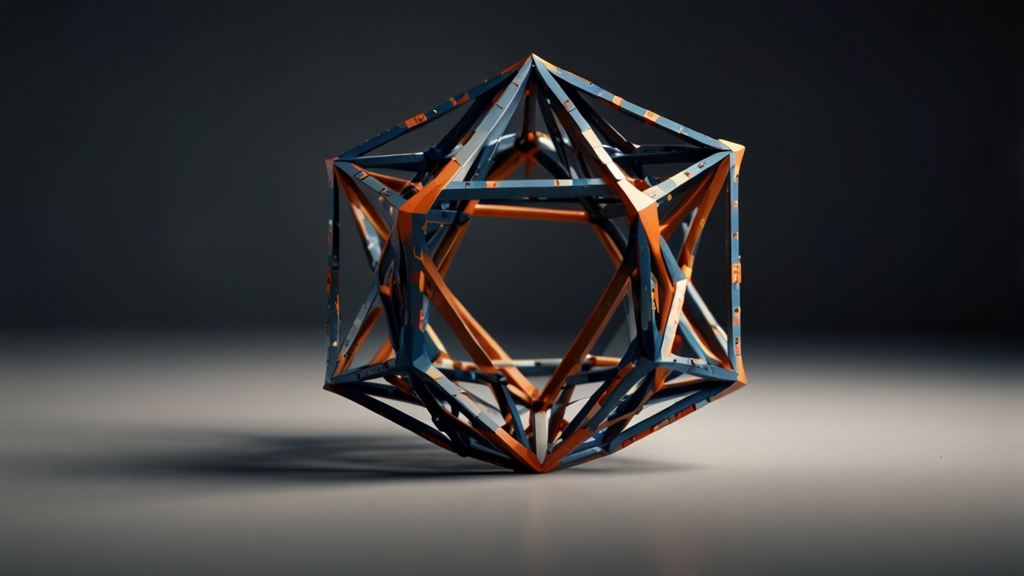Can Geometry Predict the Future? The Mathematical Perspective
Geometry, a branch of mathematics that deals with shapes, sizes, and the properties of space, has played an essential role in human understanding of the physical world for centuries. But can it actually predict the future? This intriguing question takes us into the rich and complex interplay between mathematics and the natural world, where theorems and formulas might offer a glimpse into what lies ahead.
Understanding Geometry
At its core, geometry is concerned with the properties and relations of points, lines, surfaces, and solids. From Euclidean geometry, which explores flat space, to non-Euclidean geometries that delve into curved space, this mathematical discipline provides tools that scientists and mathematicians use to model real-world phenomena.
Consider the flight of an airplane, the architecture of buildings, or the intricate patterns in nature – they all embody geometric principles. These principles are not static; they evolve with new discoveries and technologies, pushing the boundaries of what we know and what we can predict.
Geometry and the Physical World
The application of geometry in predicting future events is seen most prominently in physics and engineering. One of the foundational successes in this regard is Einstein's General Theory of Relativity, which uses the geometry of spacetime to describe gravitational forces. Through this geometric framework, predictions about the movement of planets, stars, and even the expansion of the universe have been made, many of which have been confirmed by observations.
Furthermore, in the realm of quantum mechanics, the concept of a particle's wave function is explored through geometric interpretations. Here, the future position or state of a particle can only be predicted probabilistically, not deterministically, showing the limits and potential of geometry in predicting the future.
"Geometry is the archetype of the beauty of the world." – Johannes Kepler
Chaos Theory and Fractals
Yet, the relationship between geometry and future prediction is not without its complexities and limitations. Enter chaos theory, a field of study that examines how small changes in initial conditions can lead to vastly different outcomes. Weather patterns, for example, can be modeled geometrically, but their inherent unpredictability limits precise long-term forecasting.
Fractals, geometric shapes that can be split into parts, each of which is a reduced-size copy of the whole, also reveal a connection between simplicity and complexity in nature. Though fractals enable more accurate modeling of natural phenomena like coastlines and mountain ranges, they still embody the unpredictable nature of chaotic systems.
"Predictability: does the flap of a butterfly’s wings in Brazil set off a tornado in Texas?" – Edward Lorenz
Applications in Technology and Society
Advances in computational geometry have opened new doors for prediction in various fields. Artificial intelligence, for example, uses geometric algorithms to enhance machine learning, enabling predictions in finance, healthcare, and beyond. Self-driving cars use geometric principles to understand their surroundings and make real-time navigational decisions.
Moreover, network theory, which studies the connections between objects (nodes) and their links (edges) using geometric and algebraic methods, has become crucial in understanding social dynamics, epidemiology, and the spread of information. These insights can inform strategies to influence future outcomes, from marketing campaigns to public health interventions.
Ethical Considerations
While the predictive potential of geometry inspires awe, it also raises ethical questions. Who controls the algorithms that predict stock markets or determine social media trends? How do we ensure that predictions do not lead to unfair biases or discrimination? As we move forward, these considerations will play a vital role in responsibly harnessing the power of geometric prediction.
"With great power comes great responsibility." – Voltaire
Conclusion
While geometry offers profound insights and predictive power in many areas, it is not a crystal ball that unveils the future with unerring accuracy. Its strengths lie in modeling and understanding patterns, structures, and relationships within the bounds of both deterministic and probabilistic frameworks. The future, intertwined with uncertainties and the complexities of chaos, remains a blend of predictability and surprise.
As we continue to explore the mathematical frontiers, the relationship between geometry and future prediction will undoubtedly evolve, guiding us toward deeper understanding and innovative applications. The journey itself, filled with geometric elegance and complexity, promises to be as compelling as the predictions it may one day enable.








